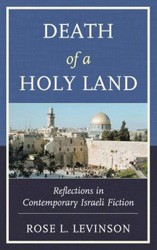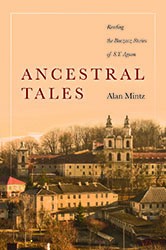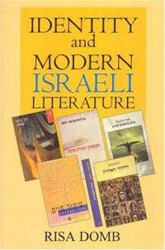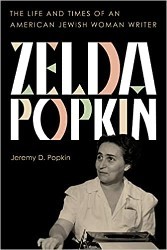In this critical study, Joseph Lowin carefully examines eight examples of the contemporary Israeli novel, aiming to elucidate the images of art and artists in modern Israeli culture. The selected novelists are Aharon Appelfeld, A.B. Yehoshua, Meir Shalev, David Grossman, Amos Oz, Ronit Matalon, Aharon Megged, and Zeruya Shalev. According to Lowin, what joins these writers is their shared dedication to the novel as a refined, self-aware, and deeply literary form. Lowin aims his sophisticated exegesis at “serious readers of literary texts” who are especially “moved by an aesthetic view of life.”
Starting with the immediate aspects of Israel’s daily and political life, each of these authors reaches higher – to “another part of the country, where art dwells.” Lowin designates this lofty area as “Aesthetic Israel.” The special qualities of “Aesthetic Israel” emerge through detailed analysis of of such well known novels as Appelfeld’s The Age of Wonders (1981) and less publicized ones such as Ronit Matalon’s The One Facing Us (1998). Lowin explores the way crafted complexity and ambiguity privilege “the very idea of the art of novel, or even more directly the art of art itself.”
Tangible interactions and events give way to “a story about storytelling” as each novel moves to the stylized, self-reflexive realm of “metafiction.” Lowin further contends that such aesthetic strategy has a profound Jewish resonance –as related to “the Midrashic mode‑a mode of writing that involves rewriting and adapting previous texts.” Meir Shalev’s novel, Esau (1994), for example, requires “slow, deliberate reading” as he challenges the reader with a “myriad of allusions.”
Lowin gives expert attention to the special, “arcane” literary devices displayed in these novels. Readers will find frequent mention of such esoteric terms as “alternating frameworks,”“interior duplication,” “locus amoenus,” “doppelganger,” “mis en abyme,”and “ecphrasis.” To his credit, the author always explains and illustrates such specialized narrative methods. For example, in his chapter on Matalon’s The One Facing Us, Lowin shows how the author makes use of the ecphrasis technique to describe a work of art within the pages of her novel. Discussing Yehoshua’s 1989 novel, Mr. Mani, Lowin points to the novelist’s use of “locus amoenus,” the desired, idyllic place, as central to the novel’s structure and movement. Like the other novels, Mr. Mani emerges as a “complicated labyrinthine piece of work” designed by an author “immersed in the Jewish textual tradition.” Lowin includes very helpful footnotes illuminating Mr. Mani and Yehoshua’s creative aims. The book’s very thorough index also aids readers’ understanding of the technical aspects of all eight novels.
Lowin is always alert to such narrative fundamentals as plot, historical context, setting, character, and conflict. In this way, he gradually draws his readers into the existential flow of the novels. He invites contact with the original text and further work of each novelist. However, in his consistent concern with novelistic nuance and complexity, Lowin guides readers into the distinct landscape of “Aesthetic Israel.” Amos Oz, one of the book’s selected novelists, has recently remarked that “Jewish continuity [is] primarily textual.” In this thoughtful book, Joseph Lowin further traces such continuity by linking each of his chosen Israeli novels to “the great chain of the Jewish textual tradition.”





